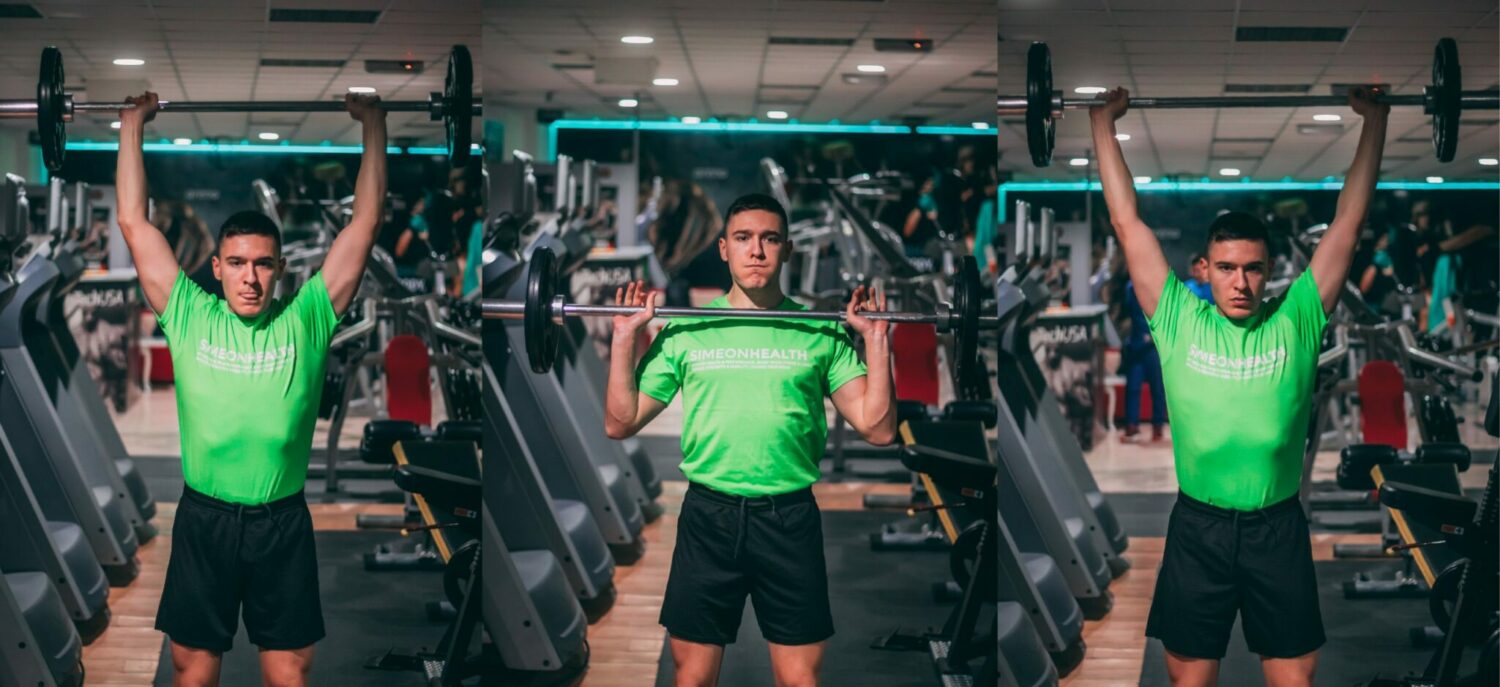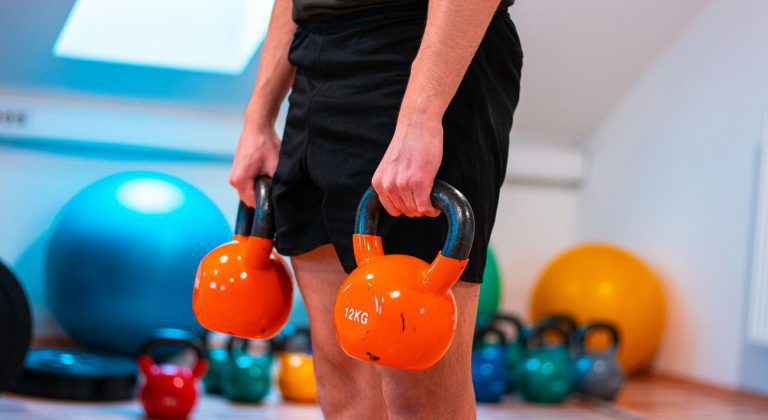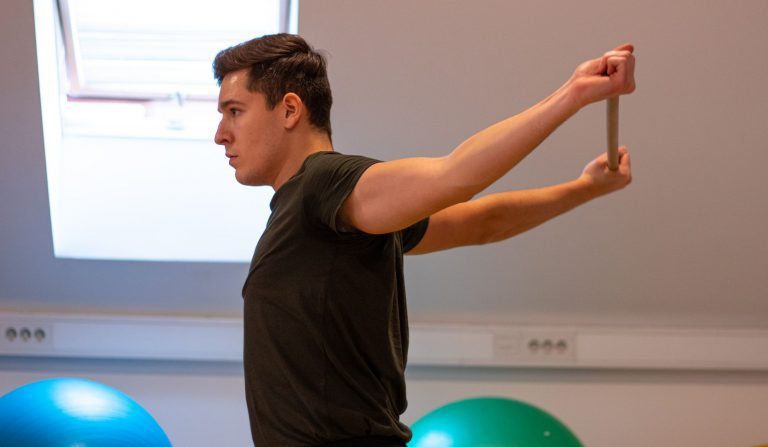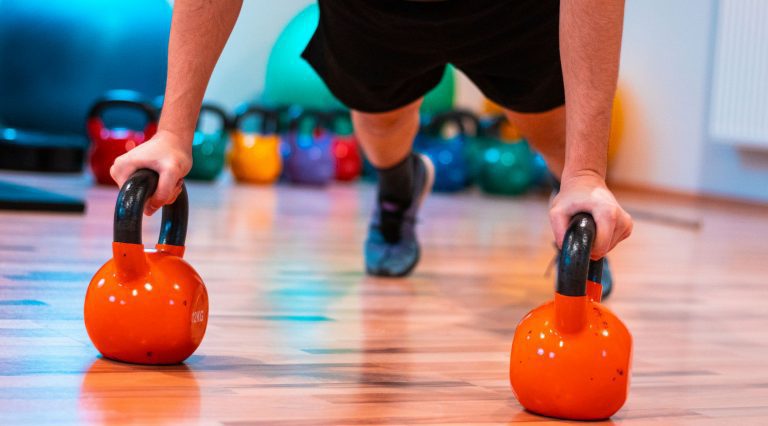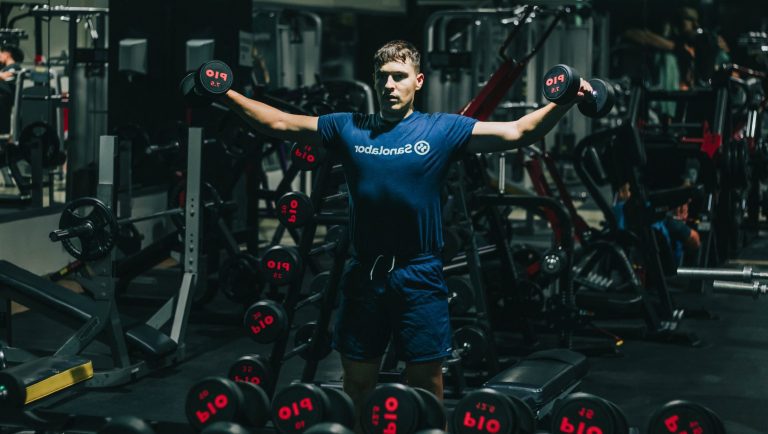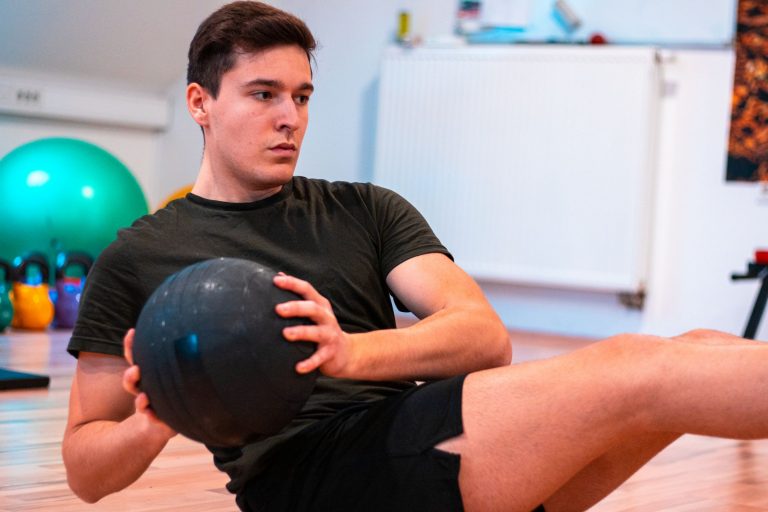Weightlifting Increases Testosterone and Libido | 17 Studies
One of the most important anabolic hormones associated with muscle growth, tissue regeneration, and sexual desire is Testosterone. Even though it’s dominant in males, females have small amounts too. This article will break down how weightlifting increases testosterone, along with some other potential effects.
Ensuring optimal levels of Testosterone can have a significant impact on your results in the gym, as well as your energy levels, muscle maintenance, and fat loss.
Exogenous vs. Natural
Taking testosterone exogenously is one of the most popular ways to increase testosterone levels, but there may be unwanted side effects in the long run. So in case anyone considers taking testosterone, they should always do specific research and consult a medical specialist. We do not recommend exogenous Testosterone and with that being said this article will take the exogenous testosterone out of the way, and mainly focus on the natural ways to increase and optimize testosterone levels.
What is Testosterone?
Testosterone is a steroid hormone that is produced by adrenal glands in smaller amounts, and in men’s testicles and women’s ovaries.
It is known as the hormone of dominance, and is the main reason why males are stronger than females, and also have lower levels of fat and higher levels of muscle mass. Most of the male’s characteristics like higher bone density, deeper voice, hairy body, and higher muscle mass have to do with the higher production of Testosterone.
Main Function of Testosterone
Testosterone has various functions in both female and male bodies.
It is a sex hormone that also plays a major role in:
- Muscle growth
- Red Blood Cell Production
- Sperm Production
- Strength Gains
- Fat-Distribution
- Bone Density
- Aggressive Mood
Optimal Testosterone levels are important for normal sexual development, muscular growth, libido, energy, red cell production, and sperm production.
Symptoms of Low T-Levels
Low Levels of Testosterone are associated with:
| weakness and fatigue | lower energy production |
| depressive and nostalgic symptoms | lower muscular gains |
| lower confidence & self-esteem | lower strength gains |
| Less body hair | low libido & sex drive |
| thinner and weaker bones | low sperm count or quality |
| lower bone mineral density |
How to Measure Testosterone?
There are two ways to tell your testosterone levels.
- Objective: To perform a blood test that shows levels of testosterone. The normal range is around 300 ng/dL – 1000 ng/dL. To be more specific, testosterone concentration tested in 100 participants aged 19-39 (European and American non-obese population) shows testosterone level range of 264 ng/dL to 916 ng/dL. (1)
- Subjective: based on personal perception of libido, muscle gains, energy, aggressiveness, and confidence.
On average, testosterone levels range from 264 ng/dL to 916 ng/dL in non-obese men. (2)
The objective way of measurement, with a blood test, will be by far more accurate but every human can compare themselves to how they felt in the past, in terms of these characteristics.
For example, if you feel like it’s hard to gain muscle, you are depressed, have erectile dysfunction, or are low on energy, if you compare that with a period in your life when you were energized, confident, and had higher libido then you know that your T-levels shifted.
What Affects Testosterone Levels?
Our hormonal environment says a lot about how we perform, feel, and function. Testosterone levels can be highly affected by many factors including simple ones like genetics, age, and sex as well as other secondary factors like nutrition, supplementation, training, water, mood, sleep, and stress.
A lot of people do not understand how significant effect these secondary factors have. Chances are, most of us have had great days in terms of energy, libido, and confidence (or muscle gains) and days where we are slacking back.
This of you and your body in winter, does that feel the same as in summer. When do you want to train harder? Chances are, most of us like it more in summer. Not because we will show off on the beach but mainly because vitamin D from the sun we get affects our testosterone levels.
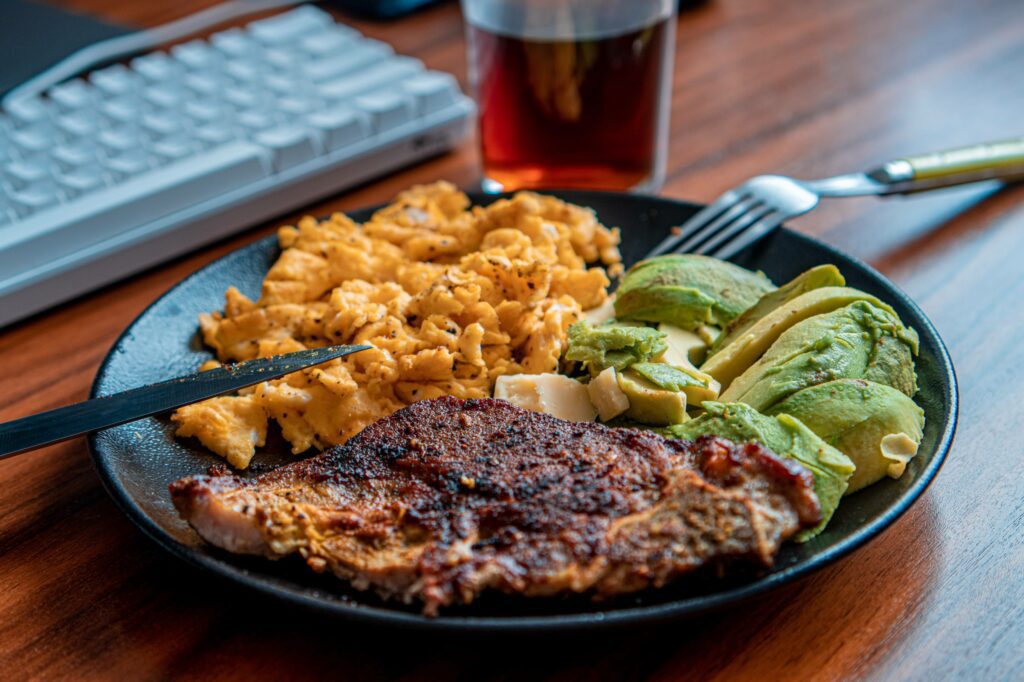
Optimizing your sleep, keeping a strict schedule, and sleeping in a dark and fresh room can boost your T-levels. Being constantly worried, stressed, or afraid can secrete higher amounts of cortisol and adrenaline hormones that are catabolic, therefore lowering your testosterone.
key point
Testosterone is affected mostly by stress levels, sleep quality, and nutrition. Optimizing your diet, and eating higher healthy fat and protein content can boost your testosterone, as well as supplementing with zinc, maca, or vitamin D.
Total vs Free vs Bound Testosterone
If you are confused with all the different T measures, this will make it easier for you. What is the difference between free, total, and bound testosterone?
- Total Testosterone measures, as the name suggests, total testosterone which is bound + free Testosterone
- Free testosterone is the circulating testosterone levels in your blood, which is “free” meaning it can be used by the body, it is bioavailable.
- Bound Testosterone is the amount of T bound to proteins like albumin and sex hormone-binding globulin (SHBG)
Anabolic vs Catabolic State
Any living organism maintains a certain balance between anabolic and a catabolic state. This balance is what keeps the organism alive.
Simply put, as time passes we eat, exercise, function and these activities cause inflammation, tears, or micro-injuries in our body. To perform these things like exercise, we are entering the catabolic state which releases energy and causes micro-injuries (or inflammation). Then our bodies enter the rest and digest or anabolic state to regenerate.
To put it in muscle building perspective, when we go to the gym and do our cardio & weightlifting sessions our bodies secrete catabolic hormones to release energy that we use to exercise the muscle. This causes micro-tears in the muscle and the immune cells release cytokines that cause inflammation. This is uncomfortable and it hurts, especially when we are starting out, but it is a must for our body to fight back and regenerate while we eat and sleep – the anabolic state.
Catabolism
Anabolism
Catabolism or catabolic state refers to the metabolic pathways associated with the breakdown of molecules, from bigger to smaller units. This ensures energy release and allows us to function. Catabolic hormones are adrenaline, noradrenaline, glucagon, and cortisol.
Anabolism or an androgenic state has to do with increasing or building bigger molecules from smaller units. As opposed to breaking down, this is the production, the growing or synthesizing state which makes us grow and regenerate. Anabolic hormones are Growth Hormone (HGH), Testosterone, Insulin, and Insulin-Like-Growth-Factor- 1 (IGF-1).
Weightlifting Effects on Testosterone & Libido
Weightlifting or Resistance training is a training protocol made up of different exercises that use external resistance (bands, dumbbells, machines) against which we push by activating our muscles and producing force.
One of the most studied effects of weightlifting besides gaining muscle mass and strength is the testosterone-boosting effect.
Testosterone and Weightlifting
Research shows that Testosterone and growth hormone have both increased in young (23) and elderly subjects (63) after a single weightlifting session and progressive 12-week training. Young subjects had far superior increases of GH basal levels. (3)
If our goal is to induce testosterone with exercise, volume, and intensity are the keys. In general, the acute weightlifting protocol can increase T-levels but the exercise protocol must contain high volume and adequate metabolic demand. (4)
More Research: Testosterone and Weightlifting
- As shown in 2010 research in the “Journal of Strength and Conditioning Research” weight training can increase the ratio of Testosterone to Cortisol, enhancing athletic performance and muscle gains while reducing stress. The 8 weightlifters examined slowly reduced the volume of resistance training but progressively increased intensity in the 9-week protocol up to the competition. Clean and Jerk and total performance were improved, but not the snatch and front squat. Changes in T:C weren’t correlated with performance improvements from the 7-9th week. Weightlifters did make progress even though T:C ratio did not change accordingly at the end. This can show us that volume is important if we want to boost T-Levels. (5)
- When comparing younger to older men in terms of exercise effect on testosterone, a study found that overall T-levels are higher as well as the T-response from acute weightlifting was higher in younger participants. Both groups trained 5×10 RP leg presses performed before and after a 12-week period. It turns out that Testosterone was acutely stimulated in both groups and that exercise-induced secretion of Testosterone was induced by a decrease in metabolic clearance of Testosterone. (6)
Testing adaptations of resistance training in men vs women has shown that over an 18-week period both groups had improvements in extensor maximal torque, 4 m walk time, muscle cross-sectional anatomical area, and five-chair raise time. The muscular gains in terms of muscle quality and maximal torque were superior in men, which is thought to be promoted due to higher testosterone response. (7)
Other research has shown that exercise has many positive effects on sex drive in women. It was shown that the type of exercise, volume, and intensity are far more important than the activity itself, in terms of increasing libido. Physiological sexual arousal was driven by an increase in sympathetic nervous system activity and endocrine function. By affecting self-image, improving body composition, and preserving autonomic flexibility exercise improved libido in women. (8)
key point
Weightlifting has testosterone-boosting effects for the majority. The libido-boosting effect is (in general) strongest in young and active males. Training effects are different and dependent on sex, age, and genetics. Males have a superior increase in muscle gains and libido-boosting effect due to an increase in testosterone.
5 Ways to Boost Testosterone
These top five ways to boost testosterone are not a hidden magic contained in a pill or special exercise. Is what we already know but may not actually put into practice. For those wanting a shorter answer, compound weightlifting at higher volume and intensity with a high-protein diet and optimized sleep is the key.
70/30 Rule: Hypertrophy Compound Weightlifting
Training is the most important stimulus when it comes to muscle growth and testosterone increase. The main drive that creates a pleasant and potential hormonal environment for the muscles to grow, including higher levels of T and GH, is weightlifting.
The three main principles you want to incorporate into your training are:
- 70/30 Rule: incorporate 70% of compound movements and 30% isolation.
- Lift Compound: perform multi-joint exercises that stimulate bigger muscle portions
- Hypertrophy Method: for the highest hormonal response use 8-12 reps, 80RM%, 3-4 sets with 60s rest
70/30 ratio: Compound vs Isolation
To maximally grow and enhance muscle hypertrophy, you need to hit the muscle on a different axis. You need to learn to use the complex structure that you have, and there is no better way than lifting the majority of your lifts compound.
- Compound weightlifting is doing complex multi-joint exercises with external resistance such as squats, overhead press, weighted dips, or bench press. These multi-joint movements can further increase your testosterone, activate larger muscle groups, and enhance your gains in the gym.
- Isolation on the other side, as shown on Sci-Fit.net has many uses in rehab, muscle imbalance correction, recovery, and injury prevention. Isolation exercises are great to increase lactic acid and maximally pump out the muscles, but usually, they are best in smaller doses at the end of the workout. (9)
Sticking to the 70-30 rule of the compound to isolation training can ensure you hit the basic, most optimal exercise and larger muscle group which can raise your testosterone & strength while also ending up each session with a pump, trying to increase lactate and inflammation in the muscle so it has to adapt.
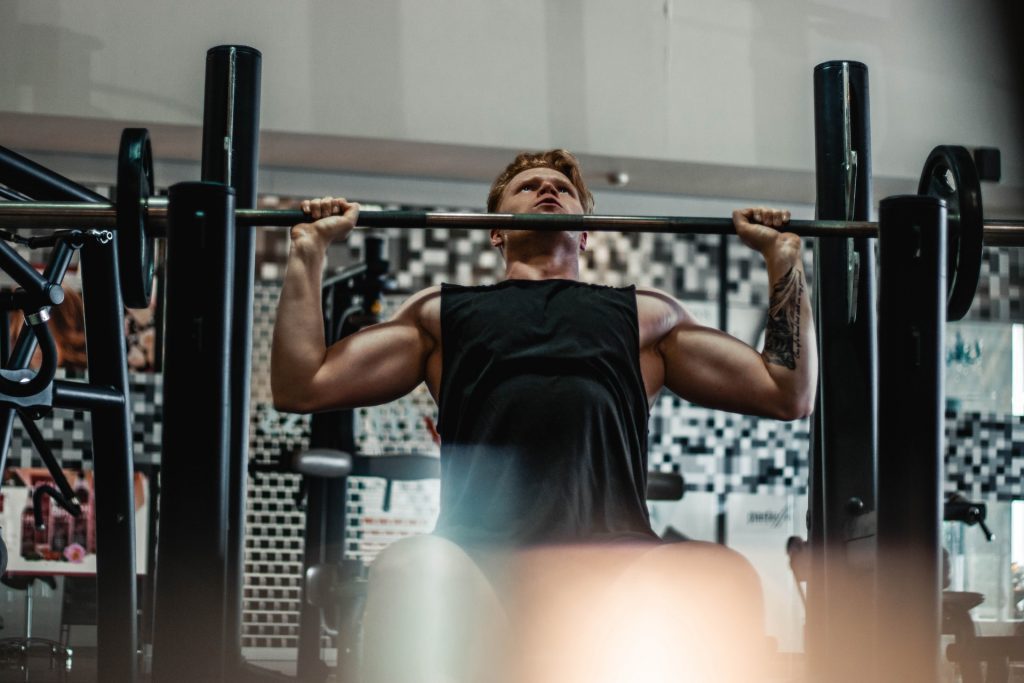
The Hypertrophy Method
If you read everything already, you know this part.
The best Weightlifting Method for Muscle Growth is the standard, Hypertrophy method.
| Warm-up Protocol | (Functional Warm-up) using light cardio and mobility movements |
| Training Volume and Frequency | High volume of training, 6 days a week, hitting large muscle groups twice weekly |
| Type of Contractions | Aim for both concentric and eccentric contractions, and do all reps in a controlled manner |
| Exercises | use a combination of dominantly compound (70%) and isolation (30%) exercises |
| Muscle Groups | the best way is to work push muscles (chest, triceps shoulders), Pull Muscles (Rear Shoulder, Mid, Upper, and Lower Back), and Legs (Quadriceps, Hamstrings, Glutes, and Calves) twice weekly |
| Sets | Aim for 3-4 sets per exercise, three exercises per muscle group, which is 10 sets/muscle per workout, 20 in total per week. |
| Reps | Aim for 80% RM (weight) and 8-12 repetitions. Do them in a slow, controlled manner completely engaging the muscle. |
| Rest | duration of rest should be 60 seconds between exercises, you may take one 3-minute break at the half of your workout. |
High-Protein Diet
The average human with a sedentary lifestyle needs around 50 grams of protein, dependent on age, sex, genetics, and so on. This amount is okay for muscle maintenance in average humans.
If you are training, however, this amount cannot be sufficient to support muscle growth. While overloading protein in your diet is not the smartest idea in the long run, eating a substantial amount is. But to figure it out, we need to know what research says, how much is enough?
Research Limitations
*Studies have some limitations, important to evaluate the validity of their results. Here’s a highlight of some and NOT ALL studies (and limitation), shown in this article, for context.
- Further research needed to asses difference in testosterone levels in other populations around the world.
- Small sample size and specific population * (n)8 male weightlifters.
- Weak to moderate control of external factors which may affect results *diet, amount of protein ingested, quality of sleep, genetics, etc.
- Aged data or data older than 10 years *2010, 2011.
- Muscle memory can be limited factor, as it is untested (and hard to asses), leading to greater or over-exaggerated benefits.
key point
The basic Muscle-Growth Protein Requirement recommendation is 1 gram of protein per pound of body weight which is 2.2 grams of protein per kilogram of body weight.
This is not a one-fits-all answer because overweight people will end up eating too much protein which results in fat gain again.
Here’s what the research found:
- 2.3 grams per kg was superior to 1 gram per kg for young healthy athletes during short-term weight loss. (10)
- Absorption-wise, it is smarter to eat more meals with 0.4g protein (a meal) per kg of body weight spread in 3-5 meals, rather than having all your protein in 1-2 meals a day. This rule applies if you want to further support muscle growth anabolism optimally, and muscle protein synthesis. (11)
- For Athletes, 1.3-1.8 grams per kg is optimal, while going higher such as 1.8-2.0 during caloric deficit may help with preserving lean muscle mass and prevent loss. (12)
The higher the intensity, volume, and training, the more fat-free mass we have, we aim for more protein.
So the best solution is to calculate your Fat-Free Mass or FFM and adjust your protein accordingly. If you calculate your FFM, you should aim for around 2 grams of protein per kg of body weight while if you count on your full body weight, you should go for 1.6 optimally.
This is not professional advice, nor a recommendation. Always do your own research and try it for yourself. This is a way to simplify and make counting easier for you.
The point is that during weight training you want to keep your protein high at around 1.2 – 2.2 per kg of body weight, which is the normal range. Going overboard with it and eating too little protein can cause muscle loss while going too high will result in weight gain (dominantly fat) unless you drop your carbs (from which your performance and energy will suffer) or your fats (which can cause hormonal imbalance).
Which foods can increase testosterone?
Foods that are rich in zinc and vitamin D can support optimal testosterone levels. So foods like nuts (walnuts, almonds), seafood (crab and lobsters) whole grains, red meat, poultry, seeds, eggs, and dark chocolate.
Does intermittent fasting increase testosterone levels in men?
The logic behind intermittent fasting and HGH or T-boost is that insulin is lower so those hormones can travel freely without being blocked. Don’t get confused, both hormones are very important but chronically elevated insulin levels are related to low testosterone. Overall research mainly concludes an increase in HGH, but not such strong relation to Testosterone, in terms of fasting. If your main worry is muscle building, make sure you aren’t in a caloric deficit because of fasting. Otherwise, fasting may help with regeneration, fat-loss, and muscle building.
Is there evidence that weightlifting increases testosterone?
Yes, there is quite a lot of research showing positive effects of weightlifting, especially in the hypertrophy range in terms of increasing HGH, Testosterone, and with it, libido and muscle growth. This affects both sexes, all age groups, but younger males had the highest results from weightlifting in most of the studies.
Do HIIT instead of Slow-Long Cardio
When trying to build muscle and lose fat at the same time, one of the most common mistakes people make is long cardio sessions. While it’s unfair to say that bodybuilders don’t do so, professionals have completely different regimes, so it’s best to not compare yourself.
- To learn more, check out our HIIT vs Long Steady Cardio Comparison
HIIT or high interval intensity training has been shown very effective in different studies on fat loss, insulin resistance, glucose tolerance, and skeletal muscle fat oxidation. (13)
The effects of aerobic training are definitely huge for heart health and efficient for weight loss. The problem with muscle growth is that it’s an anabolic process while long cardio sessions cause a higher and longer rate of catabolism in the body. This means that maybe you are now wasting the muscle you worked so hard to gain.
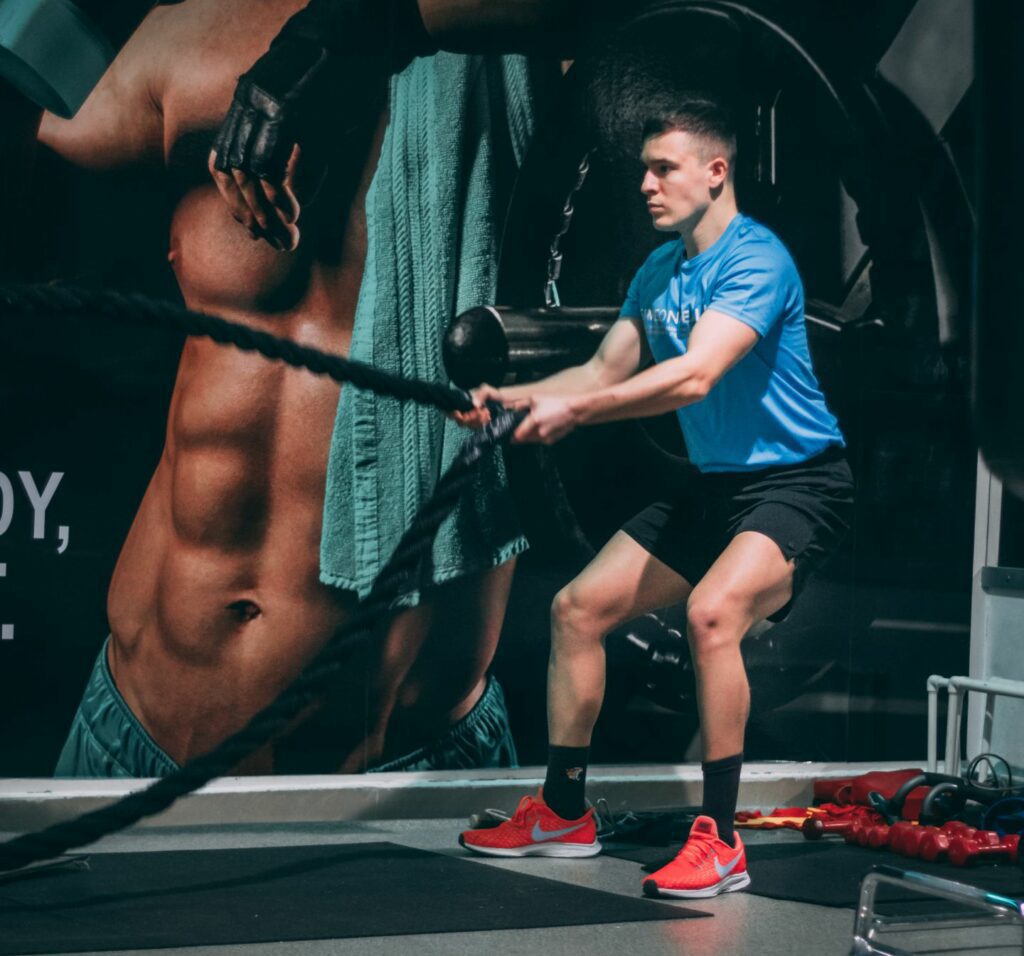
People are not built to be bodybuilders and marathoners at the same time. Strong, Lean people usually have more white-fast twitch fibers activated, trained, and hypertrophied while runners, swimmers, and bikers work on the aerobic activity of their slow-twitch muscles. This doesn’t mean you shouldn’t swim or run if you want to build muscle but if your main goal is fat loss and muscle growth.
HIIT is great supplementation before or after weight lifting sessions to get the heart rate up, speed up your metabolism, and cause an after-burn effect.
Optimize Sleep & Regeneration
Sleep is the natural process of regeneration. In fact, sleep is the most important state where the anabolic gains actually happen. While in deep sleep our pituitary gland secreted Human Growth Hormone which is the main regeneration and tissue repair hormone. Optimal sleep can significantly improve and optimize your Testosterone levels too.
Since even a one-week sleep restriction of 5 hours per night has led to a reduction in testosterone levels by 10-15% in young healthy men, optimizing your sleep might be a good way to restore or even boost natural testosterone levels. (14)
There are other studies and articles showing the same result, how sleep deprivation or sleep disorders can lower testosterone in men. (15)
To Optimize sleep you want to:
| Keep a strict sleeping schedule you respect 6 out of 7 days a week |
| Sleep in a dark room with fresh air and free of distractions |
| Do not consume caffeine after 12 am, minimize alcohol |
| Drink Sleep inducing Teas or supplements herbal tinctures (valerian root, passionflower fruit) |
| Increase your intake of Magnesium or do deep breathing exercise before sleep |
| Do a quick meditation of self-myofascial release massage before bad |
Supplement with Zinc & Vitamin D
Zinc is a mineral that plays a major role in DNA and protein synthesis, metabolizing nutrients, and testosterone production. Some of the richest sources of zinc are seafood like shellfish, oysters, and crabs as well as nuts and seeds.
The best form of zinc in terms of absorption is zinc gluconate. To further increase its effects, stay away from taking other minerals with it. A great sleep addition would be ZMB6 or zing-magnesium and vitamin B6.
When it comes to vitamin D, the sun highly affects our circadian rhythm, which affects sleep and energy levels which then, in turn, affects Testosterone levels. Vitamin D supplementation has been shown to boost testosterone levels in men, especially in those who are deficient.
This study has shown a significant increase in total testosterone, free testosterone, and bioactive testosterone levels from taking vitamin D supplements in doses of 83 μg (3,332 IU) daily for a year. (16)
Whether that’s eating more fish, dairy products, nuts, and poultry or getting more sun, or supplementing with it, increasing the levels of zinc and vitamin D, especially in those who are deficient can significantly impact testosterone levels. (17)
Conclusion
Testosterone is a steroid hormone that plays role in red blood cell production, muscle protein synthesis, fat distribution, and bone density. It is primarily a male hormone also secreted in females in smaller doses. It is the hormone responsible for a deeper voice, broader skeleton, higher muscle strength, and dominance.
Normal Testosterone levels range from 250-900 ng/dL. The best Natural Ways to increase testosterone production are to lift weights that activate higher muscle groups (compound) with high intensity and volume, optimize your sleep, minimize your stress, supplement with zinc and vitamin D and perform HIIT activities rather than long cardio.
Frequently Asked Questions
How can i naturally increase testosterone levels in my body?
By lifting weights with the proper intensity and volume, using the hypertrophy method of 8-12 reps, 85%RM, 3-4 sets, 60s rest mainly focusing on compound movements such as bench press, squat, overhead press, weighted dips, and pull-ups. Another way is to increase the intake of zinc and vitamin D in your diet, perform HIIT instead of long-cardio sessions and lower your stress levels.
How to decrease estrogen and increase testosterone at the same time?
Testosterone gets converted into (estradiol) estrogen by aromatase. While using testosterone boosters or aromatase inhibitors has shown results, this is not the natural way to go. For the majority, testosterone levels are best affected through optimizing sleep, nutrition, and lifting weights. Foods known to reduce testosterone are seeds, green tea, mushrooms, and cruciferous vegetables, and natural supplements known to inhibit aromatase are maca and wild nettle root.
Which training method is best to boost testosterone production?
Weightlifting wise, the hypertrophy method. With the proper intensity and volume, using the hypertrophy method of 8-12 reps, 85%RM, 3-4 sets, 60s rest mainly focusing on compound movements such as bench press, squat, overhead press, weighted dips, and pull-ups.

